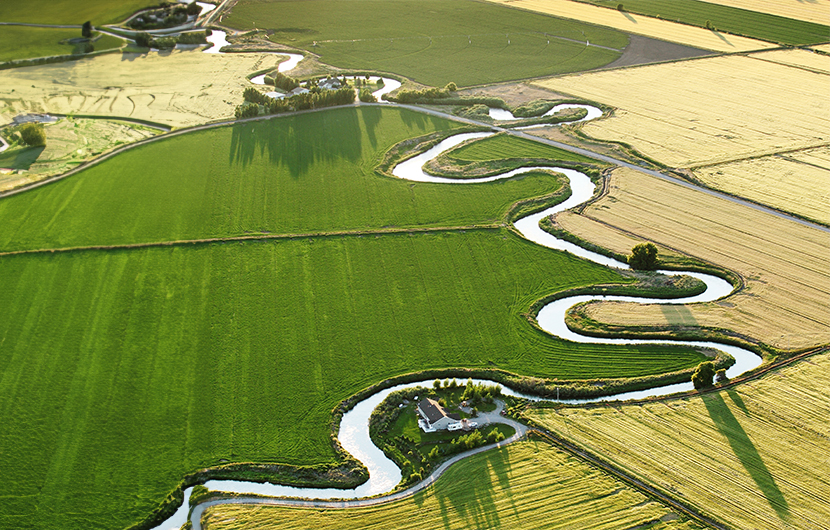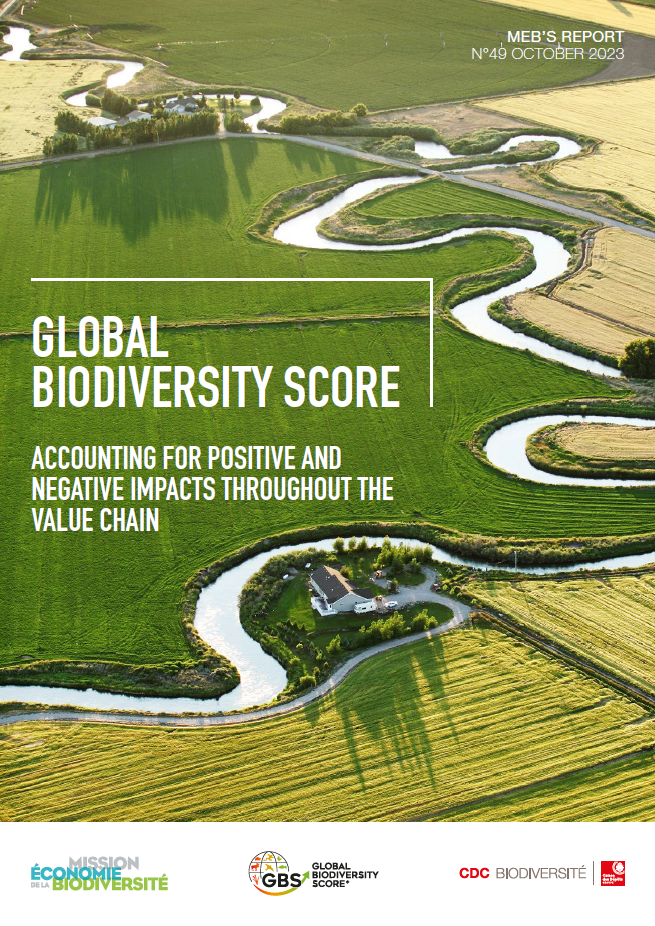Accounting for positive and negative impacts throughout the value chain
MEB’s Report n°49

Table of content
|
Foreword 1. Key concepts of the Global Biodiversity Score (GBS) and its ecosystem 1.1 Brief history and reminders on the GBS 1.2 Overview of the GBS ecosystem 1.3 The GBS and Science Based Targets (SBT) 1.4 Accounting for stocks and variations of stocks of biodiversity 2. Role of the GBS in the overall landscape 2.1 Mapping of biodiversity impact measurement tools 2.2 Mapping of existing initiatives 2.3 Linkage of the GBS with the Taskforce on Nature-related Financial Disclosures (TNFD) 3. New concepts 3.1 Comparing impacts on terrestrial and aquatic biodiversity: introducing MSAppb (MSA parts per billion) 3.2 Avoided, reduced and positive impacts 3.3 Classification of Scope 3 biodiversity impacts 3.4 Critical dependencies to biodiversity |
4. Update on methodological developments 4.1 The overfishing module 4.2 Climate change static impacts Case study Vattenfall FAQ How to interpret levels of influence in order to prioritize actions? Conclusion References Appendix |
RÉSUMÉ
Global Biodiversity Score: Accounting for positive and negative impacts throughout the value chain
What are the options to reduce the on-site and value chain-related biodiversity impacts of a business? How can financial institutions assess the physical and transition risks related to the biodiversity impacts of their activity and that of the businesses they finance? Can businesses set science-based quantitative targets to reduce their impact on biodiversity as they do for climate?
The Global Biodiversity Score (GBS) is a corporate biodiversity footprint & dependency assessment tool which seeks to answer these questions. It assesses the biodiversity impacts of economic activities across their value chain, in a robust and synthetic way. It is developed with the support of over 50 businesses and financial institutions gathered in the Business for Positive Biodiversity Club (B4B+ Club) and through collaborations with academics, NGOs and other corporate biodiversity footprint initiatives.
This 2023 update describes how science-based targets could be allocated to companies, it provides explanation and illustrations for the GBS impacts accounting system, but it also details the GBS and biodiversity footprinting ecosystems, notably through mappings of existing tools and initiatives around biodiversity footprinting. It transparently describes the latest technical developments, such as the new overfishing module or the methodology to consider Climate change static impacts. Finally, it also shares the results of the simplified description of a full-scale assessment by Vattenfall. It also completes the existing FAQ with more common questions about the GBS.
Édito

Patrick de Cambourg
Chair of EFRAG Sustainability Reporting Board
